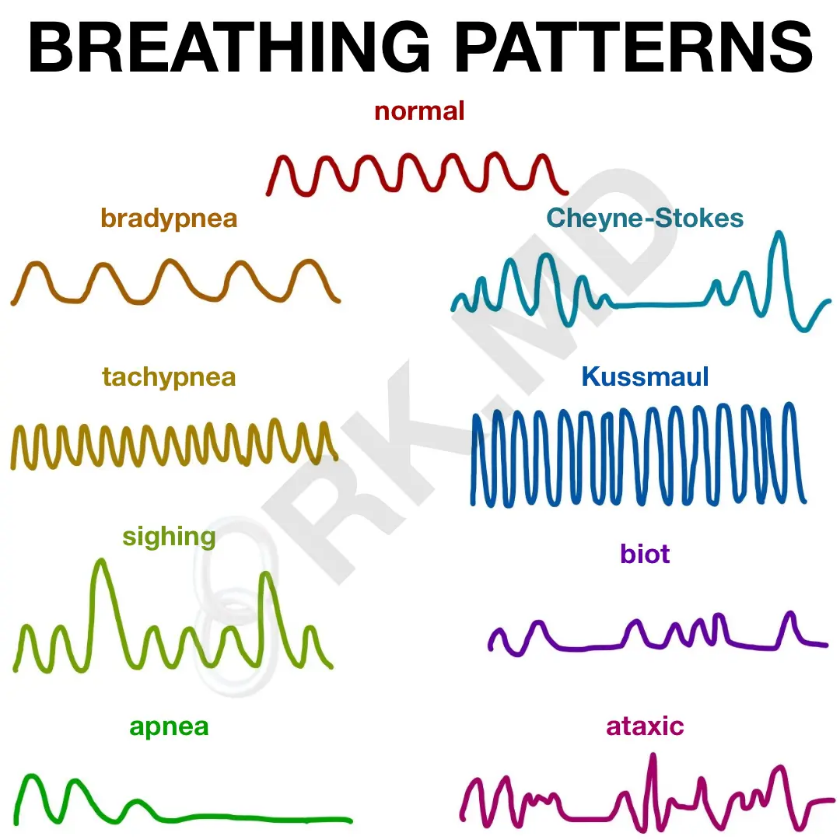A patient is having dyspnea. What would the nurse do first?
Take the blood pressure
Remove the pillow from under the patient’s head
Elevate the foot of the bed
Elevate the head of the bed
The Correct Answer is A
A. Take the blood pressure:
Assessing blood pressure is a critical initial step when a patient is experiencing dyspnea. It helps provide information about the patient's overall cardiovascular status, which is essential in determining the severity of the dyspnea and guiding subsequent interventions.
B. Remove the pillow from under the patient’s head:
Removing the pillow may be a relevant intervention if the patient is in a position that could be contributing to respiratory distress. However, the priority is to first assess vital signs, particularly blood pressure, to gather information about the patient's cardiovascular status.
C. Elevate the foot of the bed:
Elevating the foot of the bed may be a consideration if the dyspnea is related to conditions such as heart failure, where raising the legs can help reduce venous return and decrease the workload on the heart. However, the initial priority is to assess blood pressure to guide appropriate interventions.
D. Elevate the head of the bed:
Elevating the head of the bed may be beneficial for patients with respiratory distress to improve ventilation and oxygenation. While this intervention may be appropriate, the first action should be to assess vital signs, particularly blood pressure, to gain an overall understanding of the patient's condition.
Nursing Test Bank
Naxlex Comprehensive Predictor Exams
Related Questions
Correct Answer is B
Explanation
A. Regular deep respirations interspersed with periods of apnea:
This describes periodic breathing, which is different from Cheyne-Stokes respirations. Periodic breathing consists of regular cycles of deep respirations followed by periods of apnea.
B. A pattern of crescendo-decrescendo respirations followed by a period of apnea
Cheyne-Stokes respirations are characterized by a pattern of crescendo-decrescendo respirations, meaning that the depth and rate of breathing gradually increase and then decrease. This is followed by a period of apnea, during which there is a temporary cessation of breathing. The cycle then repeats.
C. Patient breathing less than 10 breaths per minute:
This describes bradypnea, which is an abnormally slow respiratory rate. Cheyne-Stokes respirations involve rhythmic, cyclical changes in respiratory rate and depth.
D. Patient breathing shallow and more than 24 breaths per minute:
This describes tachypnea, which is an abnormally fast respiratory rate. Cheyne-Stokes respirations are characterized by a distinct pattern of alternating crescendo-decrescendo respirations followed by apnea.

Correct Answer is C
Explanation
A. Dorsal surface of the foot:
The skin on the dorsal surface of the foot may have more pigmentation, making it potentially more challenging to detect cyanosis in individuals with dark skin.
B. Pinnae of the ears:
The ears may have variable pigmentation, and the presence of hair can affect the visibility of cyanosis. The skin on the pinnae may not be as thin as the skin on the dorsal surface of the hand.
C. Dorsal surface of the hand
When assessing for cyanosis in a client with dark skin, the nurse should examine areas with less pigmentation or areas where the skin is thin. The dorsal surface of the hand is often a suitable site, as it is less pigmented and can show bluish discoloration if cyanosis is present.
D. Conjunctivae:
The conjunctivae (the mucous membranes lining the inner surface of the eyelids and covering the white part of the eyes) are not a reliable site for assessing cyanosis in individuals with dark skin. Mucous membranes may not show cyanosis as prominently as the skin.
Whether you are a student looking to ace your exams or a practicing nurse seeking to enhance your expertise , our nursing education contents will empower you with the confidence and competence to make a difference in the lives of patients and become a respected leader in the healthcare field.
Visit Naxlex, invest in your future and unlock endless possibilities with our unparalleled nursing education contents today
Report Wrong Answer on the Current Question
Do you disagree with the answer? If yes, what is your expected answer? Explain.
Kindly be descriptive with the issue you are facing.
